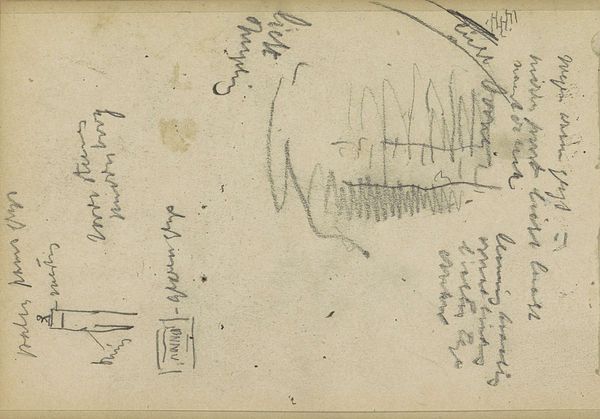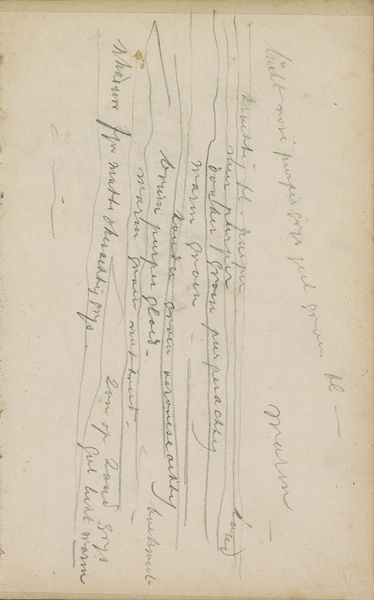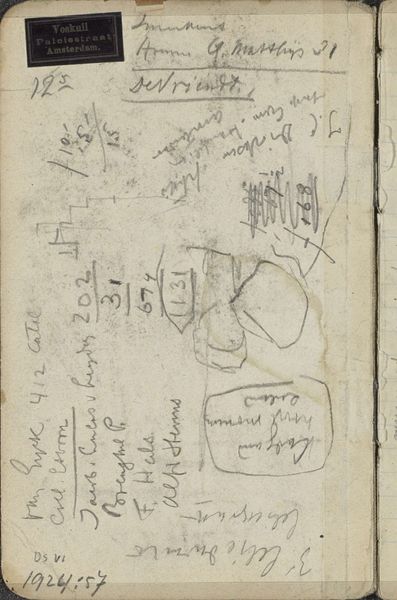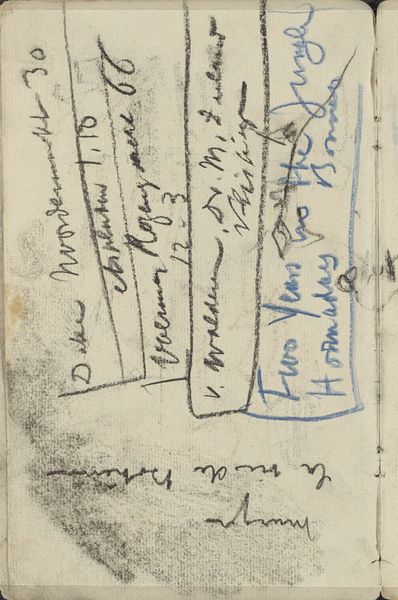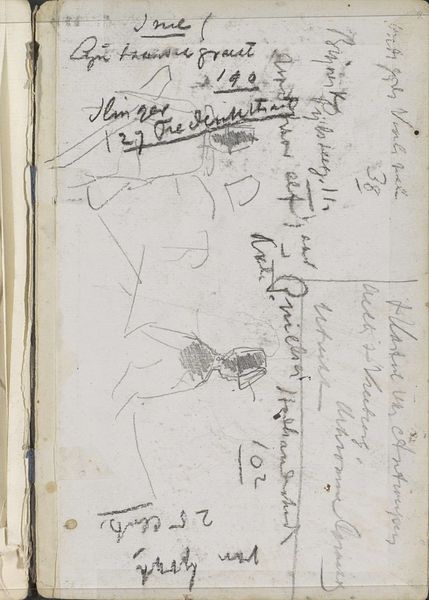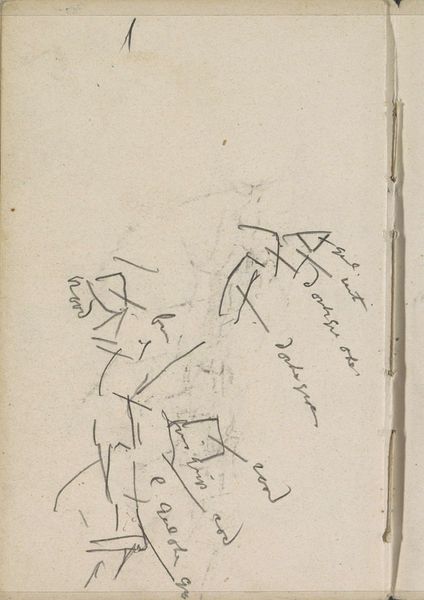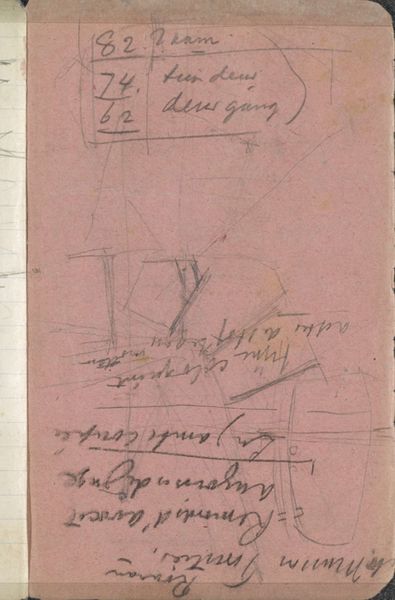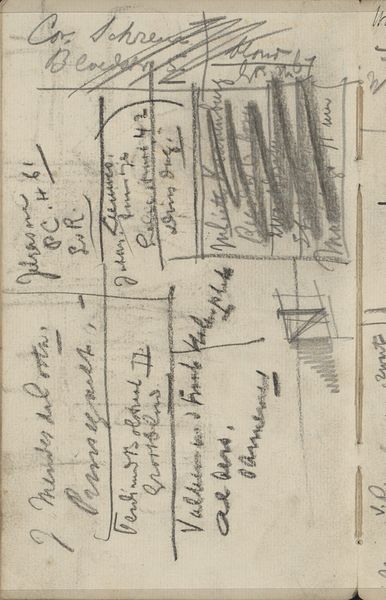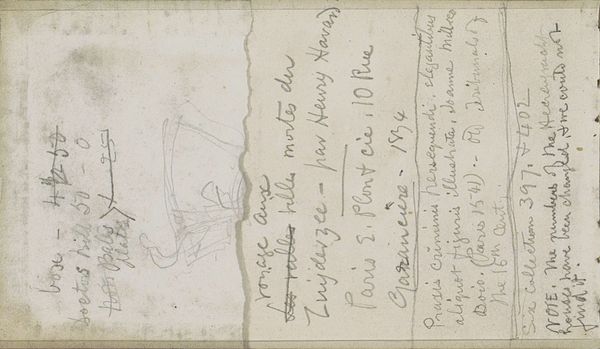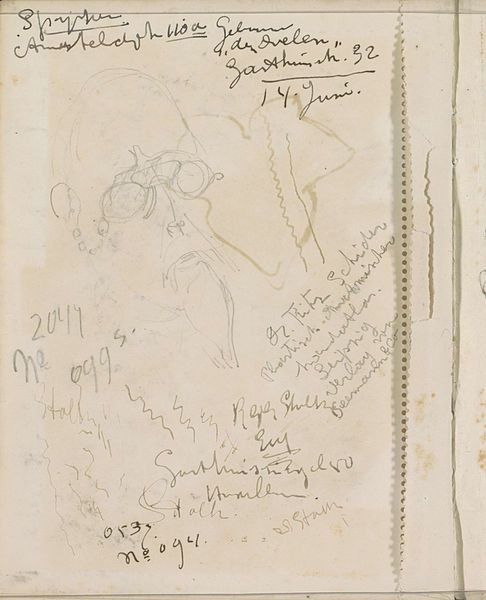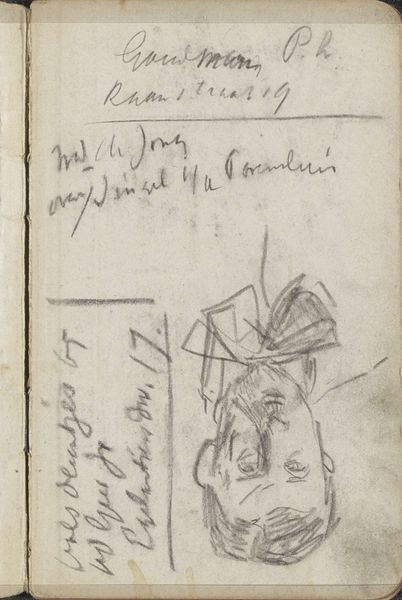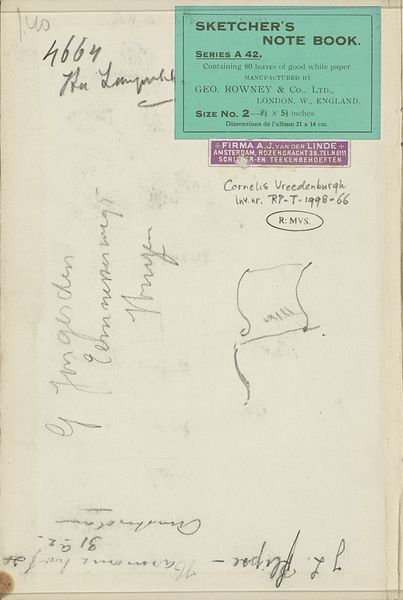
drawing, paper, graphite
#
drawing
#
aged paper
#
quirky sketch
#
sketch book
#
paper
#
personal sketchbook
#
idea generation sketch
#
sketchwork
#
geometric
#
ink colored
#
line
#
graphite
#
sketchbook drawing
#
storyboard and sketchbook work
#
sketchbook art
Copyright: Rijks Museum: Open Domain
Curator: Here we have "Cirkels," dating from between 1890 and 1946, a sketch on paper by Cornelis Vreedenburgh, currently held here at the Rijksmuseum. It appears to be a page from a sketchbook. Editor: My immediate feeling is of intimacy, almost a glimpse into the artist's private thought process. The geometric forms overlaid with annotations give it a chaotic yet structured feeling. The aged paper enhances that feeling. Curator: Precisely. The circles themselves are fascinating in their symbolism. Circles have represented wholeness, the infinite, and cycles of life for centuries, and across countless cultures. Their overlap here could represent the intermingling of ideas, the connections being made within the artist’s mind. Editor: Or perhaps, reflecting on the timeframe in which this sketch was made, during periods of immense social upheaval, the circles represent fragmentation as much as wholeness. I see how the circles crowd and intersect, perhaps even choke each other. The annotations obscure more than they reveal, like attempts to control information during wartime. Curator: An interesting interpretation! Consider too that the circle has been used historically to delineate sacred space, the mandala for example. Could Vreedenburgh be exploring his own internal sacred space here, attempting to map it, categorize it as we can read some figures? Editor: But even that idea of a sacred internal space is not apolitical. During times of war and occupation, preserving internal spaces—mental or physical—becomes an act of resistance. I think there's something to be said about these sketches as subversive in their seeming simplicity. Vreedenburgh would have had to keep any resistance very discrete, of course. Curator: It's a drawing that certainly lends itself to multifaceted readings, and acknowledges that art exists in relation to society. The geometric precision contrasted with seemingly random numbers is something I also see reflected across all kinds of symbolic visual communications across eras. Editor: Absolutely, and it speaks to how art, even in its most preliminary form, like a humble sketch, reflects the complexities of identity, culture, and historical context. It invites us to contemplate both the beauty and the struggle inherent in creation. Curator: Indeed. Thank you for elucidating further the depth within such an apparently modest work.
Comments
No comments
Be the first to comment and join the conversation on the ultimate creative platform.
